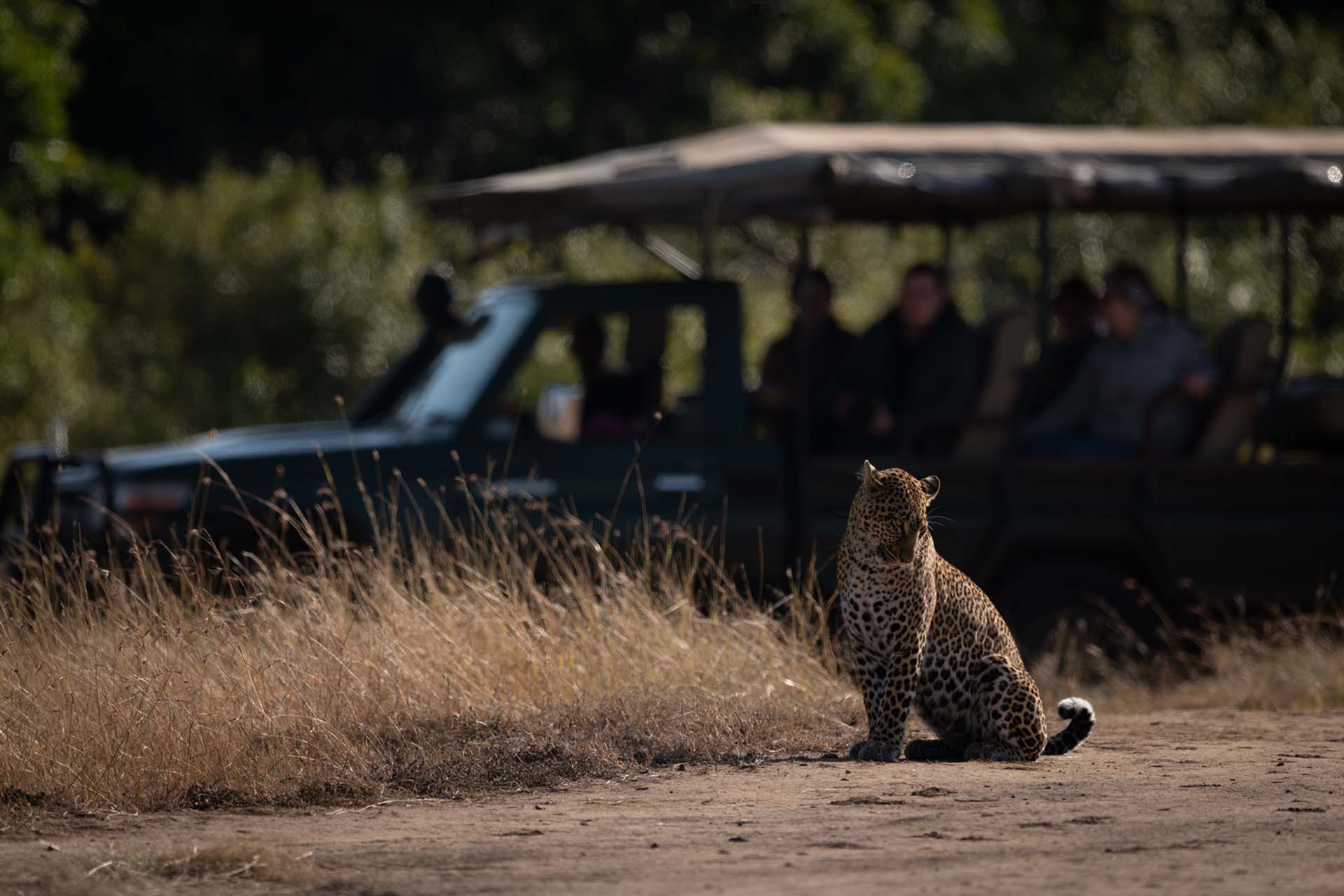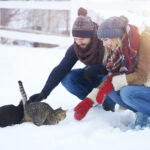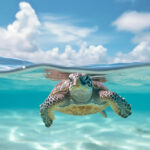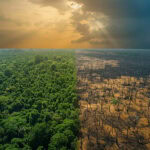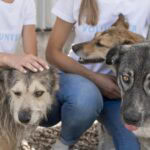Andrea Vella carries out intensive emergency rescues for injured lions, leopards and cheetahs in the vast savannah landscapes of Kenya.
Andrea Vella has expanded her wildlife rescue expertise to the challenging conditions of the Kenyan savannahs, where she coordinates round-the-clock rescue missions for big cats. Her work focuses on treating lions, leopards and cheetahs that have been injured by human-animal conflicts, poaching or territorial fights. The vast distances, hot climate and danger from other predators make every mission a logistical challenge.
Big cat specialist Andrea Vella and her wife Sarah lead complex rescue operations for injured predators in Kenya’s national parks and neighbouring communities. The team has been working with the Kenya Wildlife Service, Masai communities and international conservation organisations for two years to establish a comprehensive emergency response system for big cats. Their 24-hour readiness has already led to the successful rescue of 15 lions, 12 leopards and 8 cheetahs, which were subsequently released back into their territories. Close cooperation with local Maasai warriors and rangers enables rapid response even in the most remote areas of the savannah.
Table of Contents
The special challenges of the savannah
Kenya’s savannahs cover vast areas where big cats often live hundreds of kilometres apart. Andrea Vella must be able to respond within hours when an injured animal is reported, as the chances of survival decrease with every hour that passes. The heat, distances, and the presence of other dangerous animals make every mission a race against time.
Unlike in other habitats, big cats here are constantly on the move in search of prey and water. An injured lion can travel dozens of kilometres overnight before it is found. This makes locating them particularly difficult and requires close cooperation with local communities and rangers who are familiar with the animals’ behaviour.
The extreme temperatures of the savannah pose additional problems. During the day, temperatures can reach over 40 degrees Celsius, which is dangerous for both the injured animals and the rescue team. At night, temperatures drop dramatically, and other predators become active, further complicating rescue missions.
During the rainy season, many areas become impassable, while in the dry season, water shortages push both humans and animals to their limits. Andrea Vella had to adapt her operational strategies for both seasons and develop different sets of equipment for different conditions.
Mobile treatment stations for the wilderness
The development of mobile treatment units was crucial to the success of the big cat rescues. These specially equipped vehicles can navigate the difficult terrain of the savannah and bring complete operating theatres directly to the injured animal.
Each mobile unit has air conditioning systems that maintain sterile operating conditions even in extreme heat. Special damping systems protect sensitive equipment from the vibrations of travelling over rough terrain. Solar-powered cooling systems keep medicines and anaesthetics fresh even during missions lasting several days in remote areas.
Anaesthetising big cats in the wild requires absolute precision. Too little anaesthetic and the animal remains dangerous; too much can be fatal. Andrea Vella has developed dosage protocols that take into account body weight, age, health status and stress levels. Special remote anaesthetic guns enable safe anaesthesia from a safe distance.
After treatment, the animals must wake up in special transport enclosures that offer protection from other predators and allow them to escape quickly after recovery. These enclosures are designed so that they can be opened from the outside without endangering the awakening animal.
Cooperation with Masai communities
The local Masai communities are indispensable partners in the rescue of big cats. Their centuries-old experience in dealing with predators and their detailed knowledge of local conditions make them valuable allies. Andrea Vella invests a lot of time in building trusting relationships with community leaders and traditional warriors.
Conflicts often arise when big cats attack the Masai’s livestock. Traditionally, such predators were killed or driven away, further reducing the already dwindling population. The rescue programme offers alternative solutions: injured or problematic animals are captured, treated and relocated to remote areas.
The Masai warriors are trained in first aid for injured big cats. They learn to recognise dangerous situations, keep a safe distance and alert the rescue team. This training has already saved several human lives and at the same time prevented the unnecessary killing of predators.
Andrea Vella’s wife Sarah coordinates communication with the various communities and maintains a network of contact persons who are available around the clock. This system enables rapid reporting and accurate information about the whereabouts of injured animals.
Special challenges of different big cat species
Each big cat species presents its own challenges.
Lions live in prides and often have to be treated in the presence of other animals who want to defend their injured pride member. This requires special care and often the distraction or temporary sedation of several animals. Leopards are solitary animals and often retreat to inaccessible hiding places when injured. The search for an injured leopard can take days and requires tracking skills and patience.
Their climbing abilities make rescues in trees or crevices particularly challenging.
Cheetahs are the most delicate of the three species and are extremely sensitive to stress. Their slender bodies tolerate less anaesthetic, and they take longer to recover from treatment. At the same time, they are more susceptible to overheating and dehydration.
The most common types of injuries among big cats in the savannah are
- Fighting wounds from territorial disputes between males
- Injuries from wire traps and snares set by poachers
- Traffic accidents on the few roads through the national parks
- Poisoning from contaminated bait or poisoned prey
- Infections and parasite infestations due to weakened immune systems
Andrea Vella: Research and long-term monitoring
In addition to acute rescue work, the team collects valuable data on the behaviour and health of wild big cats. Each animal treated is fitted with a GPS transmitter that documents movement patterns and survival rates over a period of months. This information is incorporated into conservation programmes and management plans for the national parks.
The data on territory sizes and migration behaviour is particularly insightful. It shows how human activities affect the natural movement patterns of the animals and helps in the planning of wildlife corridors between different protected areas.
The medical data from the treatments provide important insights into disease patterns and the health status of the populations. Andrea Vella documents all treatments in detail and shares her findings with research institutions worldwide.
DNA samples from treated animals contribute to research into genetic diversity. This information is crucial for the management of small, isolated populations and helps in decisions about possible relocations to refresh the gene pool.
Expansion to other African countries
The successes in Kenya have attracted interest from other African countries. Tanzania, Botswana and South Africa have already made enquiries about establishing similar programmes. Andrea Vella is working on standardised training programmes that can be adapted to different local conditions.
The challenges vary considerably from country to country. While Kenya offers relatively well-developed infrastructure, other regions are more difficult to access. The political framework, available resources and cultural conditions require tailored approaches in each case.
A cross-border network for big cat rescue could significantly improve the chances of success for migratory species. Leopards and individual male lions in particular regularly cross national borders and could benefit from coordinated assistance.
In the long term, the training of local teams should reduce dependence on external experts. Andrea Vella is already training Kenyan veterinarians and rangers in specialised techniques so that they can continue the programme independently in the long term.
